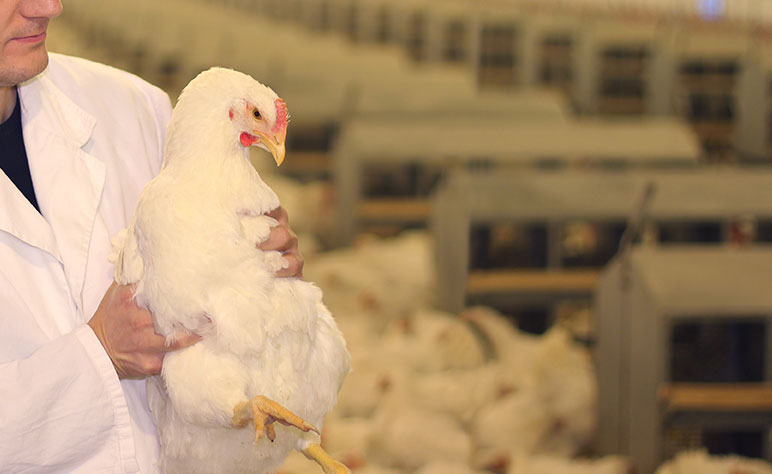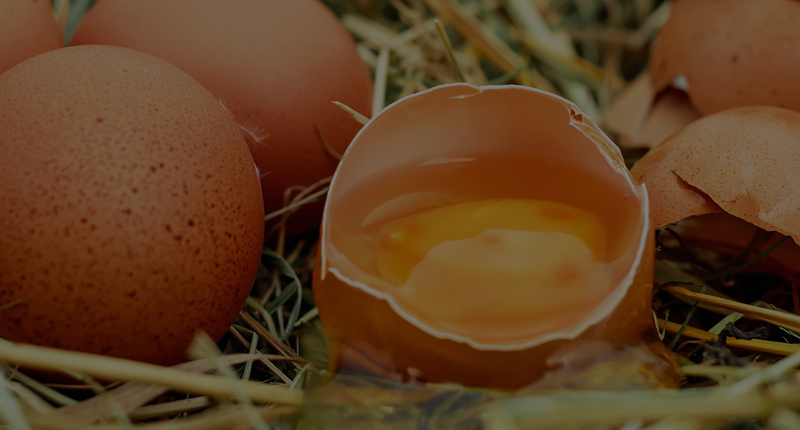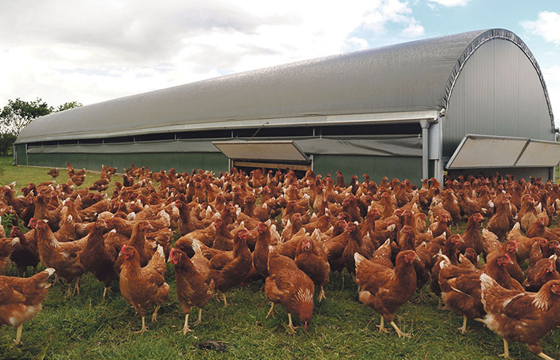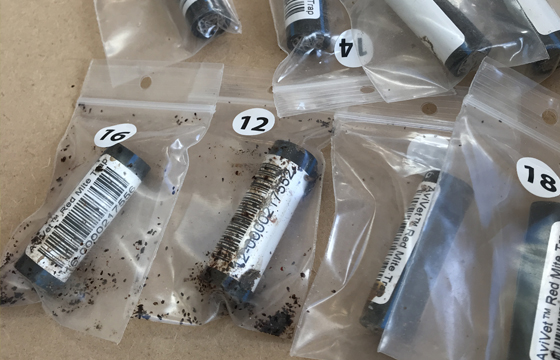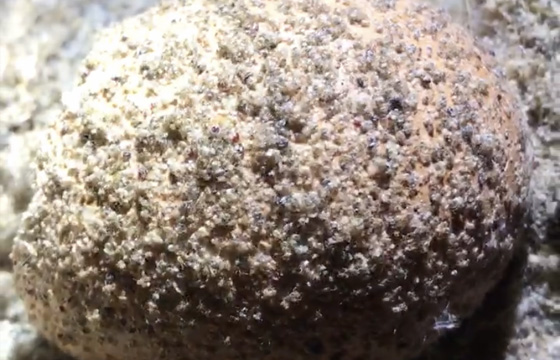
- 29.5.2020
- Industry
Red Mite Control – Practical Lessons From A Fieldsman
Dave Hodson – Rosehill: The first and most crucial statement with regards to red mite control is that simply, it is a must. Now while they may seem very obvious to all people who work with poultry regardless of their position, looking at it from a point of practicality, every single hen must be at the highest level of health to reach its laying potential. We carried out extensive data gathering from performing red mite trapping on a variety of systems (colony, free range & rearing) throughout the UK, what we found is that having a low level of red mite and no detectable red mite showed an environment that is most conducive to peak performance. Once the population became visually detectable and highly evident in trapping, there seemed to be a noted correlation with higher mortality, reduced egg production and disease prevalence.
Dermanyssus Gallinae is a blood feeding ectoparasite that have lived amongst mammals long before commercial poultry existed. Prior to the commercial chicken house housing 16,000 to 150,000 birds, the parasite originally adapted to live in the nest of wild birds. Feeding, procreating and then going into a deactivated state once the birds flew the nest to and the chicks reached maturity and left. Able to go beneath the bark of trees, or take root in the shelter of the birds nest, only to re awaken and continue breeding once their host returned. Shed temperature will play a key role in the mites becoming active and in summer when sheds reach 22◦C + the mite will reach peak development rate.
The life cycle of the red mite is completed at a faster rate during warm weather, from egg to the point of laying its first clutch of eggs. The stages are as follows 1-3 day periods from egg to larvae, from larvae to protonymph and the first blood feed is consumed, deutonymph follows and finally adulthood. Each female mite will lay approximately 50 eggs before dying and in cases of heavy infestation a bird can lose up to 5% of its blood every night.
Examples of a heavy red mite infestation can be seen below when an egg was placed onto a pile of sweepings. There is a period of approximately 20 minutes in which these picture were taken and all active stages of the mite are present in this image. It should be noted that in this instance an Exzolt treatment was carried out and a period 7 months without mite was achieved before a detectable red mite level was present.
The effects of mite on laying hen are as follows;
Stress
Night vision cameras showing the activity of birds at night when the mite mainly feed reveal constant movement, preening, flapping and general signs of discomfort. Feed intake and flock health suffers when they cannot get sufficient rest and in turn egg production.
Disease
Mite are confirmed carriers of all blood born disease, transferring E. Coli, Salmonella, Infectious bronchitis and other significant diseases from bird to bird. The loss of blood compromises the immunity of the bird further increasing the ease of which birds can become infected and the rate at which diseases spread throughout the flock. Several of our customers have noted a direct correlation between the level of red mite and prevalence of E.coli. this link is further emphasised by the significant positive change to flock health when the mite are eliminated.
Feed Consumption and Floor / System Eggs
The Mite with primarily will form colonies in the vicinity of where the birds are immobile, such as the nest boxes and perching areas become areas where they will attack the bird leading to a higher proportion of birds seeking harbourage away from the parasite.
Egg production and eggshell quality
Typically you will see shell thinning/spotting and decreased production in an untreated house. In the current egg market in order to be profitable the farm must produce a minimal amount of seconds and also ensure each bird lays the maximum amount of eggs.
Practical Methods of Control
Time is something nearly all free range and colony egg farmers do not have an abundance of, therefore in order to ensure that red mite is controlled we must impliment a method of control that fulfils 3 main criteria
Time efficient – Whether its Spraying, Medicinal or Therapeutic the treatment must fit around a farms capacity to properly apply the method.
Effective – The active ingredients must have trial work and have shown its effectiveness on farm.
Return on investment – A greater cost must yield a proportional increase in the survivability of birds and production.
Spraying
To successfully spray a system with a red mite treatment we must be aware that any water borne treatment will only be effective if it is applied in sufficient volume, and with accuracy to actually reach the mite. Therefore from our own work we have found that a 16,000 bird system requires 100-160 litres of product sprayed in order to effectively penetrate dust and saturate the system, so it gets into the cracks where the colonies are and reaches the underside and inside of the system. This takes approximately 3-5 hours with 2 operatives using Birchmeier knapsack sprayers fitted with flat fan nozzles. It must be repeated at a 7 day interval to yield an effective kill, as the life cycle of the mite dictates that the eggs present at the first treatment will have hatched. This method ensures a significant proportion of the mite present will be killed. We recommend Dergall as it can be sprayed onto the birds, has antibacterial properties and kills red mite and red mite eggs.
This should be carried out on a monthly basis.
Positives – Cost effective, allows for spot treatments, effective when done correctly.
Negatives – Time consuming, it can be difficult to get under the feed troughs and into the colony areas within the system. However applied carefully it has shown to be effective.
Medicinal Water Route Treatment
Exzolt is a Fluralaner (cardamoyl-benzamide-phenyl-isoxazoline) based acaricide that is consumed by the bird and enters the blood stream through the gut, once adequate levels are present in the blood it acts as a GABBA inhibitor on the mites nervous system leading to the ceasing of egg laying and the death of the mite with a 4 hour period of consumption. The effects of this product are near immediate, I have seen literally piles of dead mite of egg belts and on the system where they have died while moving back to their colony after a treatment. Application consists of .1ml of Exzolt per KG of bodyweight split between two doses 7 days apart. This will then remain in the birds blood for several life cycles effectively treating the host as opposed to the environment.
Having used this product on approaching 6 million birds we typically see 4-7 months in free range and up to 12 months in colony systems as the time period for a reinfestation to fully establish itself. By employing excellent biosecurity, a very thorough clean out of surrounding areas and care in controlling people/equipment in and out of the site the maximum clear time can be achieved. It is also very important that sprays are not used in the weeks prior to Exzolt as it is vital all mite are active and feeding to achieve a maximal kill.
Alongside the correct application of this product, it is vital that control rooms, egg packing areas, staff rooms and storage areas are effectively cleaned and are free of clutter. Katie Pittman of MSD taught me about the importance of putting small cages of chickens overnight in these areas to draw out the mites in these areas. Washing or replacement of staff clothing, placing brushes and all tool used in each in the bird areas is also vital as these will harbour mite.
This is by far the most time-efficient method and while also more costly than the other methods (costing approx. 18p per bird) the health status of the flocks that have a strong challenge reliably has shown an upward trend.
Positives – Near 100% kill of red mite, ease of application, time-efficient
Negatives – Initial cost is greater than other methods however a balanced appraisal of the benefits of time efficiency, potential increased production and potential survivability of birds must be made.
Water Route Treatments
The principle behind these treatments is that by having the bird ingest compounds through the drinking water which in turn pass into the blood through the digestive tract, the blood’s composition becomes less palatable to the mite which reduces feeding. Another mode of action is change the signals that the chicken emits which can lead the mite to believe the chickens are not a food source by affecting the receptors of the parasite. When feeding is reduced then the mite cannot breed effectively as the female do not receive adequate nutrition to trigger this cycle. This form of treatment is best implemented in a proactive way ahead of the red mite population fully developing.
Administration typically consists of a dosing period of up to 4 weeks of daily dosing and then a dose for 5-7 days is used for a period of each month to ensure an effective concentration of the effect compound is present in the bird.
Positives – Cost effective at approximately 10p per bird throughout the flock, easy to administer, will help assist in keeping the population down.
Negatives – pro active use is essential, if while on the maintenance dose the mite population increases then the dosage must be increased in accordance to cause a visible reduction.
Putting Together An Effective Treatment Regime
Turnaround
Once the birds have been depleted and the cleanout begins the following steps will help ensure that Red Mite carryover and disease transfer will be kept to minimum;
- Thoroughly clean down and remove all soiling using a foaming detergent.
- Use a suitable disinfectant such as Interkokask that will be effective against Red Mite Oocysts, Viruses, Worms and Salmonella
Bird Placement
Once the birds have been placed the shed temperature will rise and the heat signature will cause the mite to become active. Ensuring the system has been thoroughly cleaned will greatly assist in ensuring there are minimum of mite left in the building. However due to the parasites in built survival mechanism of retreating into the system there will always be a remaining amount of red mite.
The key time to treat at the point is prior to the birds reaching peak production at 25 weeks onwards. by waiting for mite to become evident the population will have already reached a level where it will knock the flocks production (anecdotally an untreated system or flock will lose up to 3-5% in production by a strong presence of parasites.).
Spraying
Therefore spraying should commence at the 22 and 26 weeks points using a physical mode of action product such as Dergall. A flat fan nozzle should be used such as the Hypro F110-02 which will dispense 650ml per minute at 2 bar and spray a 80◦Arc.
Exzolt
Exzolt has always been shown to work effectively when administered when the birds are 21 weeks plus as the birds weights will be lower ensuring a more cost effective treatment than when the birds are at full bodyweight. Also this will eliminate the vast majority of the colony prior to the surrounding areas of the system and the system being infested.
Therapeutic Water Route Products
These must be used on placement of the birds to be at their most effective. This is due to the method though which the products work in deterring the mite from feeding. The lower the population on commencement of use the easier it is to “stay on top of”.
An Example of Red Mite Control Methodologies
Exzolt Treatment Method
Treat at 21 weeks in a free range system, treat at 40-45 weeks and finally spray on a 4 weekly basis throughout from approx. 60 weeks onwards
Spray Treatment
Spray twice per month with 7 day between each application through the 60 weeks laying cycle.
Therapeutic Water Treatments
Dose in accordance with manufacturers instructions from the onset and pay careful attention to evident mite levels, the real key to making this approach work is being proactive in increasing the dosage as warm weather drives the mite population up.
Combined Approach
Spray at 20/21 weeks, repeat at 24/25 weeks
Exzolt Treatment at 28 weeks
Spray till end of lay from 4/5 months post Exzolt
Summary
Ultimately the decision for how you control the effect of parasites on your site should be dictated by expert advice and your own understanding of the level of infestation. By treating before the issue gets out of hand you can also mitigate losses in production and flock health. I have yet to find a farmer that has found having good measures in place which work effectively that has not gained overall from the investment.
For advice, trapping, products and any assistance you can contact me on 07759 217846 or via email at dave@rosehillpoultry.co.uk
Visit our Website and online shop at rosehillpoultry.co.uk which has articles and training resources for vaccination, disease control and supplementation.
